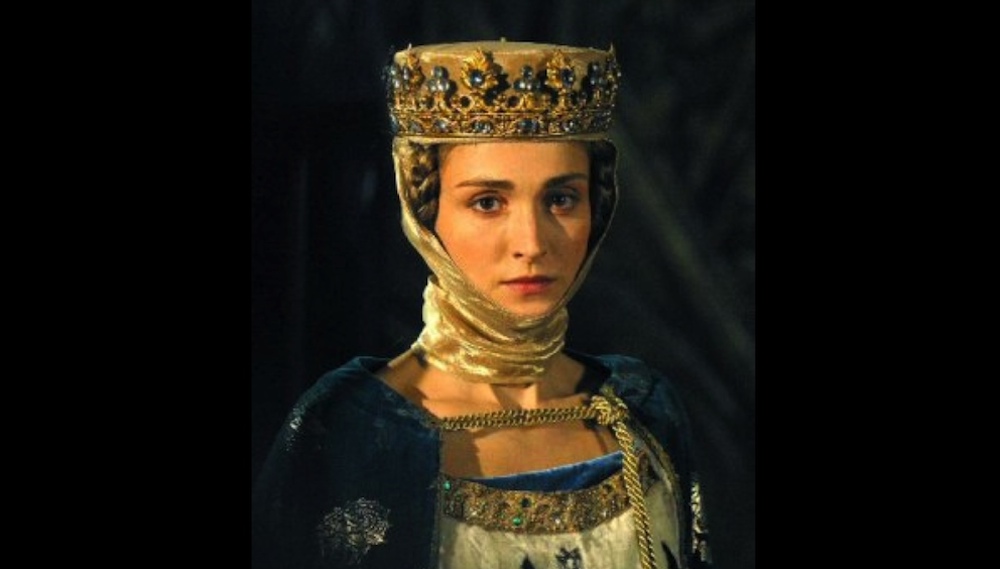
Jaques de Molay
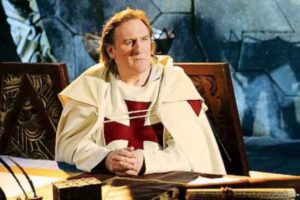
Isabella’s godfather was Jaques de Molay the Grand Master of the Knights Templar. Her father, Phillipe IV, (The Fair)was a relatively cold man, described as being “as a statue”. Isabella and Molay grew close.
Phillipe had borrowed heavily from the Templars and the Templars charged interest. He decided to seize the templar treasure for himself. At daybreak on Friday 13th October 1307 Phillipe arrested every Knight Templar in the territory he controlled.
He accused the templar’s of heresy. Jaques de Molay was arrested and tortured, but never revealed the location of the Templar treasure, which has been a subject of speculation ever since.
Isabella was horrified, but at the age of eleven, her opinions were not taken seriously. Her protests curtailed when in 1308 she was sent to England as a bride for Edward II.
Piers de Gaveston
At the feast to celebrate her marriage Edward II chose to abandon her to sit with his “favourite” Piers de Gaveston. It is probable that Edward was homosexual.
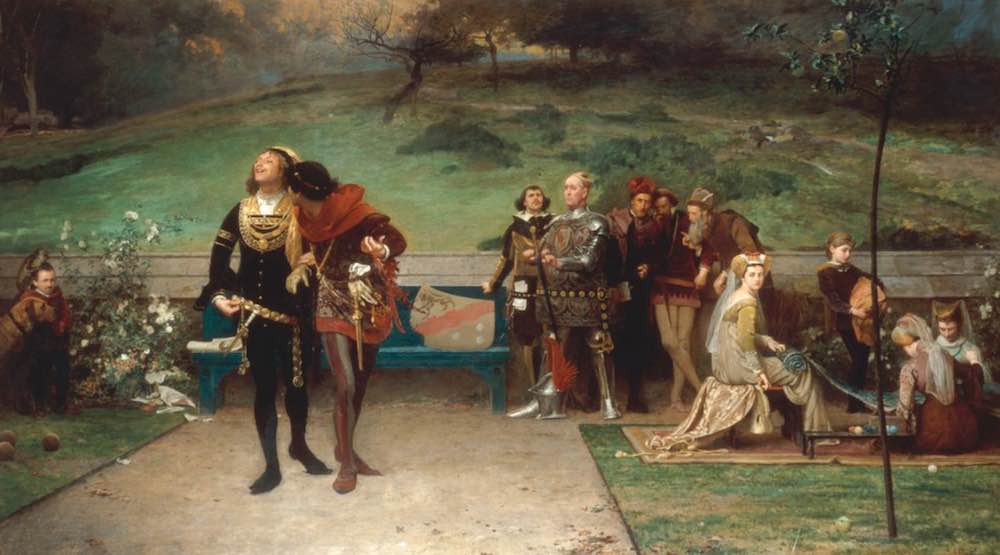
Isabella’s problems were intensified when her new husband appointed Gaveston as Earl of Cornwall, a position which had been promised by Edward I to Thomas of Brotherton, the eldest son of her Aunt Marguerite, wife of Edward I . Marguerite was furious and sought isabelles support to overthrow Gaveston.
Geneology
Isabella sought a solution to her situation. She wanted to dispose of Gaveston and punish her family for their treatment of her god-father.
Initially she tried to win Edward’s affection. She fulfilled her role as Edward’s Queen
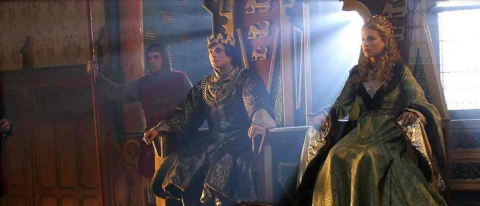
By the time she was sixteen Isabella already had an interest in geneology. We know this because one of only thirty books in her library was a book on the genealogy of her own family, the Capets. The book was based on the works of the Joinville family. Prominent at court in England was Joan de Geneville a member of the de Joinville family who was married to Roger de Mortimer. Joan de Geneville told Isabella about Roger’s remarkable lineage. messianic descent through both the Dagobert and welsh Lineages.(see The Right to Rule)
Isabella herself was proud of her own messianic lineage direct from Clovis the Great and she would have known that any child she had with Roger would inherited all three messianic lines of descent, which which would make the child unique. Perhaps she planned to make this happen.

In any case Isabella came to know Roger Mortimer well— very well.
The Proposition
It is possible that Edward III was in fact the son of Roger Mortimer, not Edward II.
In saying this I am immediately in conflict with Kathryn Warner author of “The Unconventional King” who carries out a non stop campaign to defend Edward II’s reputation. Simplistic histories have Mortimer in Ireland from 1308 until 1318. However it is also recorded that Mortimer travelled continuously alternating between his estates in Ireland, his estates in the Welsh marches and attendances at court.
Kathryn is not simplistic. She has examined the records which place Isabelle and Edward together in York from the 22nd February 1312 which she claims is exactly full term before Edward III’s birth on 13 November.
Isabella, Edward and Piers Gaveston ,Edward II’s male lover, then travelled north to Tynemouth shadowed by an army of barons, led by Thomas of Lancaster, Isabella’s uncle, intent on assassinating Gaveston.
Edward and Gavescon escaped from Tynemouth by boat to Scarborough on May 5th but Isabelle travelled back by land to York, apparently unthreatened by the army surrounding Tynemouth. Her husband left Gavescon in Scarborough and joined his wife in York.
On the 19 May Gavescon surrendered and was brought first to York and then taken to Oxfordshire, where he was kidnapped and murdered on the 19th June.
Despite these events Edward and Isabella found time to take a two day excursion on the river Ouse on the 10th and 11th of June.
These dates apparently make it impossible for Mortimer to be the father of Edward III.
Wet and dry
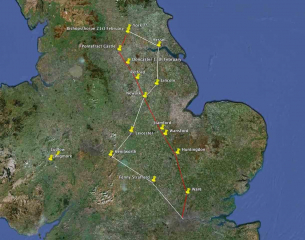 There are however many outstanding questions. What was happening in the period leading up to the 22nd of February?
There are however many outstanding questions. What was happening in the period leading up to the 22nd of February?
Isabella took a full fortune days to travel north from London to Doncaster. It is not known which route she took but there were two popular routes. The dry route avoided boggy roads, basically taking routes on relatively high ground.
To take as long as she did on the dry route meant that she was travelling very slowly —almost as if she was timing her arriva;l at somewhere with the intention to meet someone.. At Doncaster she seems to have stopped altogether
Isabella’s ovulation pattern
If there is some doubt about parentage, then it is necessary to consider Isabella’s menstrual cycle. From the date of Edward’s birth on 13 November Katherine Warner has calculated the day of Isabella’s ovulation would have been 22nd of February and as on that date she was in York with Edward, then Edward must have been the father of her child.
The Ovulation Cycle
However, the human gestation period is actually 280 days from the first day of the last period or alternatively 266 days after ovulation.(because ovulation normally occurs 14 days after the start of a period). 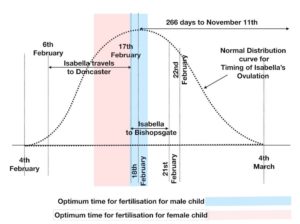 This gives a date of ovulation of 18th of February not the 22nd . to make allowances for irregularity of periods the medical profession regards baths of two weeks before or two weeks after the standard gestation period as “normal,” This is to allow for variation in the menstrual cycle not for the time taken for the child to progress inside the womb.
This gives a date of ovulation of 18th of February not the 22nd . to make allowances for irregularity of periods the medical profession regards baths of two weeks before or two weeks after the standard gestation period as “normal,” This is to allow for variation in the menstrual cycle not for the time taken for the child to progress inside the womb.
Thus Isabella’s ovulation could have occurred up to two weeks earlier of two weeks later. the application of simple statistical analysis for random variables shows however the there is a approximately a 90% probability the ovulation took place before the 22nd of February.
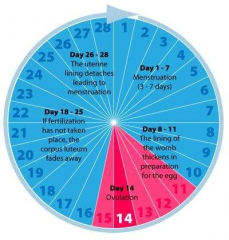 Further that that female sperm and female sperm can live up to five days in the uterus and male sperm two days. those seeking a male child should indulge in intercourse on the two days before ovulation and on the day of ovulation itself. where was Isabella for this period?
Further that that female sperm and female sperm can live up to five days in the uterus and male sperm two days. those seeking a male child should indulge in intercourse on the two days before ovulation and on the day of ovulation itself. where was Isabella for this period?
She took four days to travel from Doncaster to York, a distance of less than thirty miles. She could have conceived on any of these days.
The person who gave her safe conduct in Tynemouth was Thomas of Lancaster. His major stronghold was Pontefract Castle near Wakefield. The deviation from Doncaster would have taken only extra eighteen miles.
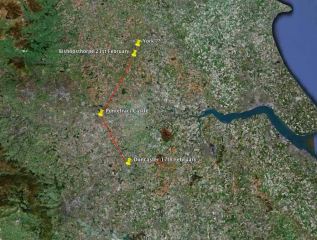 Just suppose that Isabelle made the deviation to negotiate her own safety. Just suppose that Mortimer already unhappy with aspects of Edward II’s rule attended the meeting seeking her support against Gavescon.
Just suppose that Isabelle made the deviation to negotiate her own safety. Just suppose that Mortimer already unhappy with aspects of Edward II’s rule attended the meeting seeking her support against Gavescon.
This is all supposition and then again there is the fact that in the period leading up to 1322 she had not one but four children. Could Mortimer have fathered all four children?
There is certainly room for speculation and in the time leading up to 1355 the speculation was rife. However the speculation gain traction after the events of !314and 1315 .(see Les Rois Maudites.)